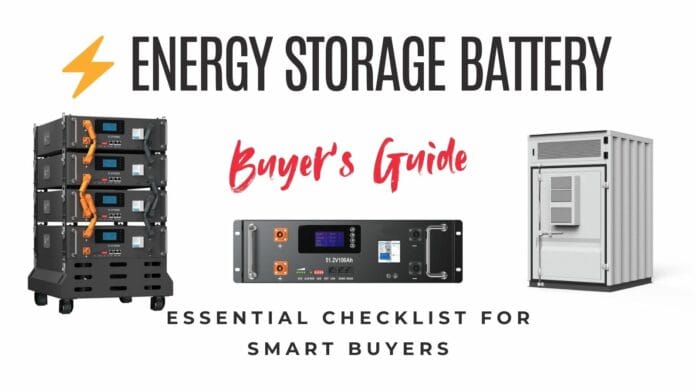Energy Storage Battery: When it comes to energy storage, the battery is the heart of your system. Whether you’re working on residential backup, commercial energy optimization, or grid-scale storage, selecting the right battery isn’t optional — it’s mission-critical.
Poor decisions during procurement can lead to safety risks, operational failures, and unplanned costs. The following guide will help you make informed, risk-free choices.
1️⃣ Energy Storage Battery Capacity — Match Power to Demand
Your battery’s capacity defines how much energy it can store and supply. Incorrect sizing either leaves you underpowered or wastes your investment on excess capacity.
???? Tip: Assess your load profile and backup duration needs before selecting capacity. Factor in future scalability, not just current needs.
2️⃣ Energy Storage Battery Voltage Compatibility — Safety & Performance Go Hand-in-Hand
Voltage incompatibility with your inverter can cause performance drops, safety hazards, or complete system failure.
???? Tip: Cross-verify both nominal and maximum voltages with your system components. Mistakes here are expensive to fix.
3️⃣ Communication Capabilities — Real-Time Monitoring is Non-Negotiable
Modern systems demand clear data flow between the battery and the inverter or EMS for optimal performance and safety.
???? Tip: Confirm the battery supports necessary protocols like CANBus, RS485, or Modbus, and ensure firmware updates are available.
4️⃣ Cell Safety — The Foundation of System Integrity
Cell quality directly impacts safety, reliability, and lifespan. Poor-quality cells increase the risk of thermal runaway and premature capacity loss.
???? Tip: Request documentation on cell manufacturer, chemistry, and safety certifications. Transparent suppliers are reliable suppliers.
5️⃣ BMS Quality — The Brain Behind Battery Health
The Battery Management System (BMS) protects against overcharge, over-discharge, and imbalances. A poor BMS can drastically shorten battery life.
???? Tip: Ask about BMS functions: active balancing, fault isolation, and software update support. These are non-negotiable for system longevity.
6️⃣ Life Cycles & Depth of Discharge (DoD) — Real-World Durability
A battery’s cycle life at a specific DoD determines its true usable lifespan.
???? Tip: Compare cycle life at realistic DoD values. High cycle ratings at shallow DoD can be misleading if your project demands deeper cycling.
7️⃣ Service & Warranty — Support Beyond Sales
An extended warranty means little if the supplier can’t back it up with responsive service and spare parts.
???? Tip: Review the fine print of the warranty. Understand the replacement process, failure coverage, and service response time.
8️⃣ Brand Reputation — Experience Earns Trust
A supplier’s real-world project experience is a better performance indicator than marketing claims.
???? Tip: Investigate customer reviews, deployment case studies, and long-term reliability data before choosing a brand.
9️⃣ Certifications for Energy Storage Battery — Safety and Compliance Assurance
Proper certification ensures adherence to international safety and performance standards.
???? Tip: Insist on valid certifications like UL1973, UL9540A, IEC62619, UN38.3, and CE. No certificate? No deal.
???? Final Thoughts
Investing in energy storage is not just about price — it’s about securing performance, safety, and reliability for years to come. This guide is your first step toward smarter, risk-free decisions.
Need an experienced consultant for your energy storage project?
I assist global clients with:
- Supplier audits
- Factory inspections
- FAT & QC supervision
- Risk-free sourcing and contract negotiations.
Let’s discuss how I can help streamline your procurement and reduce your risks.



